#jadidi
Text
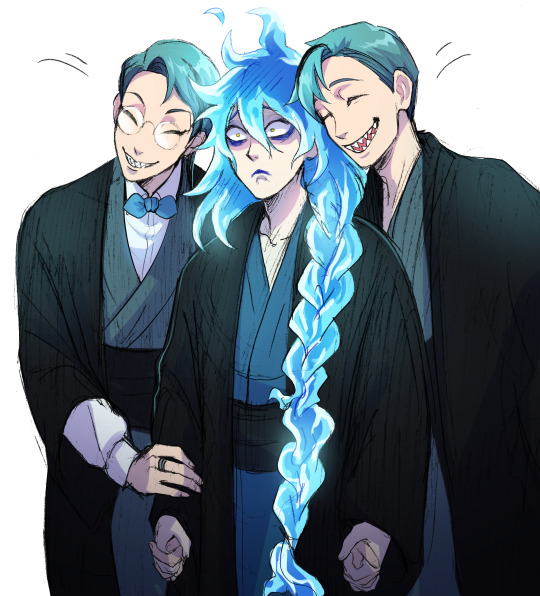
were they supposed to take idia to azul? yes
are they going to? no
1K notes
·
View notes
Photo
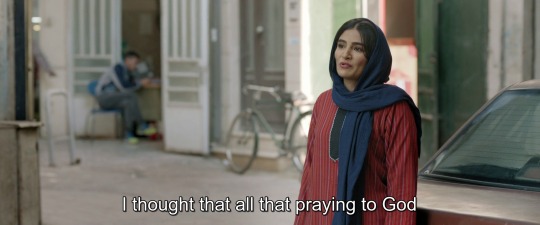

قهرمان [A Hero] (Asghar Farhadi, 2021)
#قهرمان#A Hero#Asghar Farhadi#Iran#artist#prison#jail#Cinema of Persia#Cinema of Iran#Iranian filmakers#Tehran#Mohsen Tanabandeh#Amir Jadidi#Sahar Goldoost#scandal#Fereshteh Sadr Orafaie#Sarina Farhadi#pride#charity#debt#Iranian film directors#Iranian New Wave#Middle East#money#capital punishment#selfless act#celebrity#Ghahreman#god#Shiraz
9 notes
·
View notes
Text
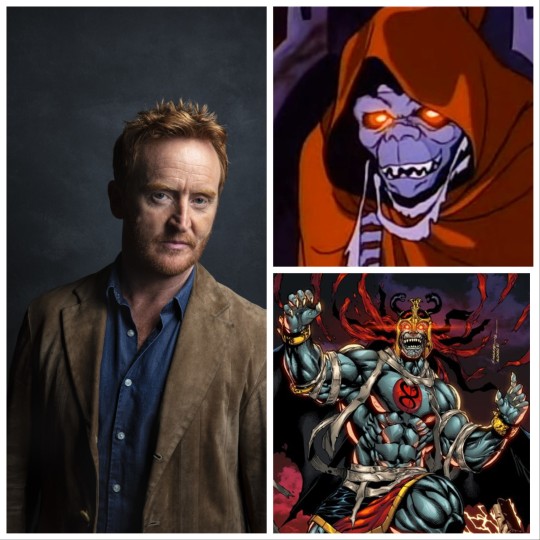

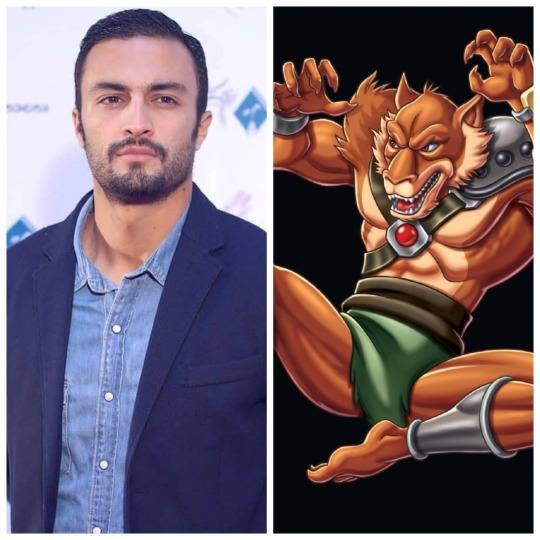



for the ThunderCats movie, i nominated Tony Curran as Mumm-Ra, Terry Notary as Slithe, Amir Jadidi as Jackalman, Alexander Ward as Monkian, Robin Lord Taylor as Vultureman and Ron Yuan or Liang Yang as Ratar-O.
#ThunderCats Movie#ThunderCats#Tony Curran#Mumm-Ra#Terry Notary#Slithe#Amir Jadidi#Jackalman#Alexander Ward#Monkian#Robin Lord Taylor#Vultureman#Ron Yuan#Liang Yang#Ratar-O#fancast
4 notes
·
View notes
Text


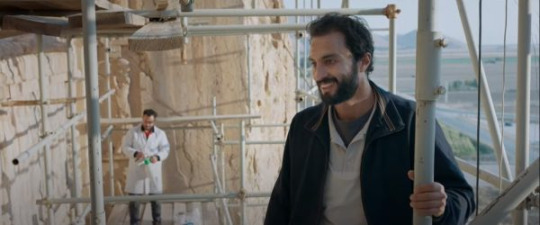


A HERO | قهرمان (dir. Asghar Farhadi, 2021)
#cinema#actors#film stills#movie stills#films#iranian#persian actors#iranian film#a hero#asghar farhadi#amir jadidi#iranian cinema#persian#قهرمان#middle eastern cinema
2 notes
·
View notes
Text
youtube
Kurt Angle (USA) vs. Abbas Jadidi (IRAN) - 1996 Olympic Games
100 KG final from the 1996 olympic games featuring future professional wrestling star Kurt Angle competing with a "BROKEN FREAKIN' NECK."
2 notes
·
View notes
Text
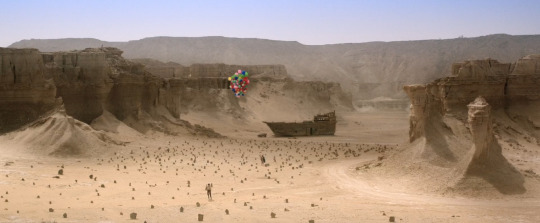
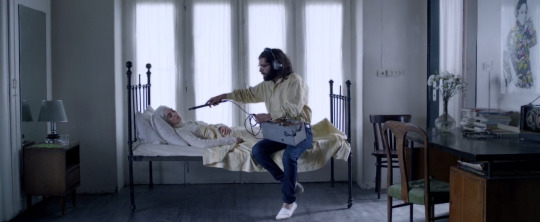

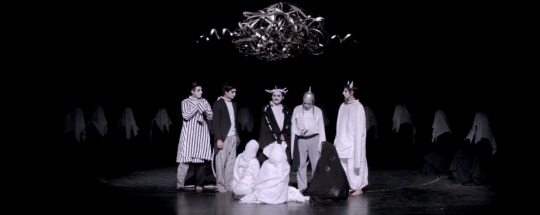



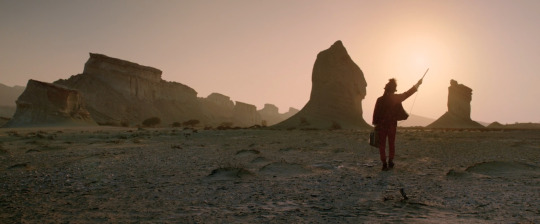


A Dragon Arrives! (اژدها وارد میشود!,) 2016
dir. Mani Haghigi
#iranian film#iranian cinema#mani haghigi#amir jadidi#homayoun ghanizadeh#Ehsan Goudarzi#Kiana Tajammol#international cinema#movies#i rewatched this in the morning and it's so good!#maybe the second framing story is a bit redundant but otherwise top class movie!#warmly reccomend!#a dragon arrives!#ejdeha vared mishavad!
21 notes
·
View notes
Photo

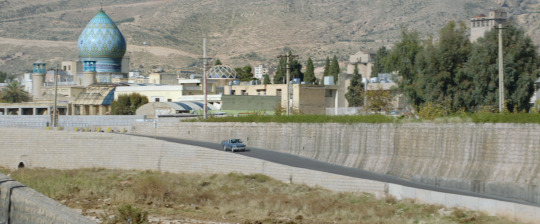

قهرمان / A Hero
Asghar Farhadi. 2021
Driving
Ali e bne Hamzeh Holy Shrine, Shiraz, Fars Province, Iran
See in map
See in imdb
#asghar farhadi#قهرمان#a hero#iran#driving#amir jadidi#sahar goldust#shiraz#shrine#movie#cinema#film#location#google maps#street view#2021
8 notes
·
View notes
Text
“A Hero” Makes a Mockery of the Heroic

Amir Jadidi stars as a man in need of favors in Asghar Farhadi’s film. Illustration by Raphaelle Macaron
Asghar Farhadi’s tale of family, community, and debts cranks up the moral suspense until we can hardly breathe.
By Anthony Lane
January 7, 2022
The hero of “A Hero,” the new film from Asghar Farhadi, is a sign painter and calligrapher named Rahim (Amir Jadidi). As the story begins, he leaves prison and is driven up the wall. To be precise, up a cliff of pale rock, rich in elaborate carvings, northeast of the Iranian city of Shiraz. The cliff is the home of a necropolis, Naqsh-e Rostam, and Rahim finds it covered in scaffolding; climbing high, he greets his brother-in-law, the rotund and genial Hossein (Alireza Jahandideh), who is working at the site. The wind whistles gently around them, and Hossein brews tea, close to the tomb of Xerxes the Great, a Persian king who died almost two and a half thousand years ago. Rahim, by contrast, is on a furlough for two days, after which—not unlike Eddie Murphy in “48 Hrs.” (1982)—he must return to prison. Observing the scene, you feel dizzy at the doubleness of time. It expands and contracts, either stretching far into the distance or slamming shut.
Something else, however, makes you no less uneasy, and that is Rahim’s smile. It looks friendly and generous, but it’s also weirdly weak, and it can fade like breath off a mirror. This is clever casting on Farhadi’s part; we warm to Rahim’s crestfallen charm, and instinctively feel him to be down on his luck, yet we don’t entirely trust him, and the film proceeds to back our initial hunch. What led to his incarceration was an unpaid debt. His creditor, Bahram (Mohsen Tanabandeh), is grave, dour, and disinclined to forgive, despite being related to Rahim by marriage. (Just to thicken the mood, Bahram is a dead ringer for the Mandy Patinkin character, Saul, in “Homeland.”) “I was fooled once by his hangdog look, that’s enough,” Bahram says of Rahim, and we can’t help wondering, Could the dog be fooling us as well?
Anyone who has seen Farhadi’s earlier films, such as “About Elly” (2009) and “A Separation” (2011), will know how cunningly he doles out information, piece by piece. Thus, in the new movie, we gradually realize that Rahim has an ex-wife; that she will soon be married to someone else; that, while he’s been locked up, his sister Mali (Maryam Shahdaei) has been caring for his son, a shy kid with a stutter; that Farkhondeh (Sahar Goldust), a young woman beloved of Rahim, is the boy’s speech therapist; and so on. These things are true, but they are hard to cling to, because they are bundled up with things that are not necessarily true—secrets and lies, in which Rahim is all too quick to acquiesce. And the bundling only gets worse.
The salient event in “A Hero” occurs before the start of the action. Farkhondeh, we learn, has stumbled on a bag of gold coins beside a bus stop. Gold! The answer to the prayers of the wretched! As on the necropolis, and in the Dickensian idea of being jailed for debt, the modern is interfused with the bygone. The film is full of cell phones and social-media posts, yet we are solemnly asked to believe in a rare discovery, shiny with temptation, that would not be out of place in the “Arabian Nights.” Such is Farhadi’s skill, needless to say, that we do believe. And such is Rahim’s pliability that we readily accept his next move. Despairing of selling the coins for sufficient cash, he arranges to seek out their rightful owner and restore them, as if he, not Farkhondeh, had found the treasure. This tactic of his, dishonestly honest, becomes a news item, and, with his furlough over, he winds up on TV as a model of transparency and probity. According to the prison authorities, Rahim “has proved with this act that one can prioritize good deeds over personal interest.” There you have it, freshly baked: a hero.
To reveal what happens after this would spoil the bitter pleasures of a tough tale. Much of the movie unfolds in tight spaces: offices, cars, corridors, and the living room of Mali’s house, where food is laid out to welcome Rahim on his brief release. Most cramped of all is the copying-and-printing store where Bahram works, and where a fight breaks out between him and Rahim—a scrappy and humiliating tussle that is caught on camera. Will the footage go viral, with disastrous consequences for Rahim’s cause? Is he not learning, the hard way, that any attempt to manhandle public opinion is bound to snap back in one’s face, and would the lesson be any different for his counterpart in an American drama?
If I had to pick a running mate for “A Hero,” it would be Preston Sturges’s “Hail the Conquering Hero” (1944), in which a well-meaning wuss is (a) acclaimed for his soldierly courage, despite not having served in the war, and (b) too compliant, and maybe too tickled by pride, to set the record straight. Tonally, the two films could not be further apart; Sturges skids toward anarchy, while Farhadi patiently cranks up the moral suspense until we can barely breathe. What both directors make plain, nevertheless, is that their heroes are not alone in their folly, and that if they teeter unhappily on their pedestals it’s because we—ordinary citizens, puffed-up officials, or loving kinfolk—are rash enough, and emotionally avid enough, to plant them there. Take the charity organizers who put Rahim up on a platform, in front of an applauding audience: Are they really moved by his predicament, or are they merely buffing their own credentials?
By a useful coincidence, “A Hero” arrives in cinemas (for viewers hardy enough to visit them) in the wake of Joel Coen’s “The Tragedy of Macbeth.” Watch one after the other and you may decide, as I did, that “A Hero” is the more Shakespearean of the two. Coen’s film is powerful but hermetic, sealed off within its stylized designs, whereas Farhadi reaches back to “The Merchant of Venice” and pulls the play’s impassioned arguments into the melee of the here and now. Granted, the here means Iran, and, in place of an ugly clash between Jewish and Christian jurisdictions, the legal and theological backdrop is exclusively Islamic; but listen to the tenor of the talk. “I don’t want to slander him, but I warn you,” Bahram declares of his debtor, “if he doesn’t pay me, I’ll denounce him.” Here is a story about bonds, breaches of promise, and the bearing of false witness; just as Shylock takes root at center stage, often consigning Antonio—the merchant of the title—to the wings, so Bahram grows ever more immutable in his grievance, and the hapless Rahim ever less deserving of our sympathy. Even his son is dragged into the tangle of his deceit. “A Hero” makes a mockery of the heroic.
Theatrical windows, these days, don’t stay open for long. Before you know it, they are closed and barred, and even respectable movies are hustled, with indecent haste, through the streaming door. A case in point: little heed was paid to George Clooney’s “The Tender Bar” when it landed in cinemas, before Christmas. Now, already, it has arrived online—the proper moment, I’d say, to repair an injustice and to give the film, with its nicely rubbed blend of roughness and delicacy, the chance it deserves.
The hero is JR. He is played as a boy of eleven by Daniel Ranieri and later, as a student at Yale and an aspiring writer, by Tye Sheridan. Everybody asks what JR stands for; everybody, that is, except the guy at the Times who takes him on as a trainee, and who tells him to change his name to J. R., with a couple of periods nailed on, if he wants a byline. Beneath such quibbling lies the primal wound of JR’s life—the absence of his father (Max Martini), a radio host whom he hardly sees, though he hears his whiskey-varnished voice on the airwaves. At one of their rare meetings, JR says, “A doctor at school says I have no identity.” “Jesus. Get one,” his old man replies. Martini has only a few scenes, yet each of them burns a hole in the film as if he were stubbing out a butt.
Requiring stability, JR and his mother (Lily Rabe) find it at the Long Island home of his grandfather (Christopher Lloyd), who is—you guessed it—crotchety but kind. Also in residence is Charlie (Ben Affleck), who is JR’s uncle, de-facto father, and—another good guess—a spigot of wisdom, pouring forth instruction in what he calls “the male sciences.” He’s an autodidact to boot, and there’s a wonderful shot of the young JR seated on a bed, facing a closet crammed with books. “What you do is, you read all of those,” Charlie says.
The gist of the critical response has been that “The Tender Bar” follows a well-worn path. Fair enough, but is that such a sin? (You should try the new “Matrix” movie. Now, that’s worn.) What counts is the firmness of the tread, and Clooney sets a careful but unloitering pace. Together with his editor, Tanya Swerling, and his screenwriter, William Monahan, he insures that the warmth of the tale—adapted from a memoir by J. R. Moehringer—doesn’t turn fuzzy in the telling, and that, as in any honest recollection of youth, the funny stuff is the flip side of pain. Hence the advice that JR receives from a pal: “When you suck at writing, you become a journalist.” No comment. ♦
Published in the print edition of the January 17, 2022, issue, with the headline “True Lies.”
#The New Yorker#Anthony Lane#Iran#Cinema#Asghar Farhadi#اصغر فرهادی#قهرمان#A Hero#Amir Jadidi#امیر جدیدی#Mohsen Tanabandeh#محسن تنابنده
0 notes
Photo

141. Um Herói (قهرمان / A Hero, 2021) dir. Asghar Farhadi
#cinema#asghar farhadi#amir jadidi#saleh karimaei#iranian cinema#2021 movies#drama#prison#in debt#family relationships#prison leave#lie#social media#tv news#collecting money#fight#father son relationship#money problems#amazon original movie#palme d'or nominee#cult director#cinefilos
1 note
·
View note
Note
HELOOOOOOOOO
RIDI BADIDI CADIDI DADIDI EADIDI FADIDI GADIDI HADIDI IADIDI JADIDI KADIDI LADIDI MADIDI NADIDI OADIDI PADIDI QUADIDI RADIDI SADIDI TADIDI UADIDI VADIDI WADIDI XADIDI YADIDI ZADIDI

4 notes
·
View notes
Text

dez lake, iran
by mehdi jadidy
8 notes
·
View notes
Text

I know it's not Friday the 13th yet, but today is our 13th anniversary, so to celebrate it…
Azul's trophy wife!
#azuide#jadidi#floydidi#azul ashengrotto#idia shroud#floyd leech#jade leech#twisted wonderland#ryuichirouart
1K notes
·
View notes
Photo

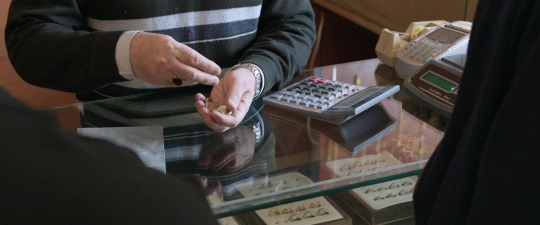
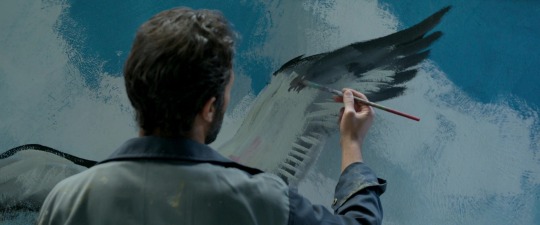
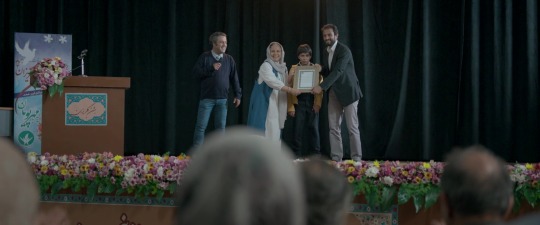






قهرمان [A Hero] (Asghar Farhadi, 2021)
#قهرمان#A Hero#Asghar Farhadi#Iran#artist#prison#jail#Cinema of Persia#Cinema of Iran#Iranian filmakers#Tehran#Mohsen Tanabandeh#Amir Jadidi#Sahar Goldoost#scandal#Fereshteh Sadr Orafaie#Sarina Farhadi#pride#charity#debt#Iranian film directors#Iranian New Wave#Middle East#money#capital punishment#selfless act#celebrity#Ghahreman#art#Shiraz
2 notes
·
View notes
Text

Billie Eilish and Finneas, who won an Oscar in March for co-writing “No Time to Die” from the James Bond film of the same name, were invited to join the Academy of Motion Picture Arts & Sciences on Tuesday (June 28) They were among 12 people invited to join the music branch and among 397 people invited to join the Academy across all branches.
An invitation to join the Academy is generally a perk of winning an Oscar. Ariana DeBose, who won best supporting actress for West Side Story, and Troy Kotsur, who won best supporting actor for CODA, were invited to join the actors branch.
Other notables who were invited to join are Jamie Dornan, Kodi Smith-McPhee and Sheryl Lee Ralph (acting), and film critic Leonard Maltin and music supervisor Julia Michels (members at large).
Invitations to membership extended this year: short films and feature animation (41), documentary (38), sound (32), actors (30), producers (30), visual effects (28), executives (26), marketing and public relations (25), members at large (25), writers (22), directors (21), production design (16), makeup artists and hairstylists (13), film editors (12), music (12), costume designers (11), cinematographers (10) and casting directors (9).
Actors
Funke Akindele – “Omo Ghetto: The Saga,” “Jenifa”
Caitríona Balfe – “Belfast,” “Ford v Ferrari”
Reed Birney – “Mass,” “Changeling”
Jessie Buckley – “The Lost Daughter,” “I’m Thinking of Ending Things”
Lori Tan Chinn – “Turning Red,” “Glengarry Glen Ross”
Daniel K. Daniel – “The Fugitive,” “A Soldier’s Story”
Ariana DeBose – “West Side Story,” “The Prom”
Robin de Jesús – “tick, tick…BOOM!,” “The Boys in the Band”
Jamie Dornan – “Belfast,” “Barb & Star Go to Vista Del Mar”
Michael Greyeyes – “Wild Indian,” “Woman Walks Ahead”
Gaby Hoffmann – “C’mon C’mon,” “Wild”
Amir Jadidi – “A Hero,” “Cold Sweat”
Kajol – “My Name Is Khan,” “Kabhi Khushi Kabhie Gham…”
Troy Kotsur – “CODA,” “The Number 23”
Vincent Lindon – “Titane,” “The Measure of a Man”
BarBara Luna – “The Concrete Jungle,” “Five Weeks in a Balloon”
Aïssa Maïga – “The Boy Who Harnessed the Wind,” “Mood Indigo”
Selton Mello – “My Hindu Friend,” “Trash”
Olga Merediz – “In the Heights,” “Adrift”
Sandra Kwan Yue Ng – “Echoes of the Rainbow,” “Portland Street Blues”
Hidetoshi Nishijima – “Drive My Car,” “Cut”
Rena Owen – “The Last Witch Hunter,” “The Dead Lands”
Jesse Plemons – “The Power of the Dog,” “Judas and the Black Messiah”
Sheryl Lee Ralph – “Sister Act 2: Back in the Habit,” “The Distinguished Gentleman”
Renate Reinsve – “The Worst Person in the World,” “Welcome to Norway”
Marco Rodriguez – “El Chicano,” “Unspeakable”
Joanna Scanlan – “After Love,” “Notes on a Scandal”
Kodi Smit-McPhee – “The Power of the Dog,” “Let Me In”
Suriya – “Jai Bhim,” “Soorarai Pottru”
Anya Taylor-Joy – “The Northman,” “Last Night in Soho”
Music
Billie Eilish Baird O’Connell – “No Time to Die”
Amie Doherty – “Spirit Untamed,” “The High Note”
Lili Haydn – “Strip Down, Rise Up,” “Broken Kingdom”
Leo Heiblum – “Maria Full of Grace,” “Frida”
Natalie Holt – “Fever Dream,” “Journey’s End”
Nathan Johnson – “Nightmare Alley,” “Knives Out”
Jacobo Lieberman – “Maria Full of Grace,” “Frida”
Ariel Rose Marx – “Shiva Baby,” “Rebel Hearts”
Hesham Nazih – “The Guest,” “Born a King”
Finneas O’Connell – “No Time to Die”
Dan Romer – “Luca,” “Beasts of the Southern Wild”
Nerida Tyson-Chew – “H Is for Happiness,” “Anacondas: The Hunt for the Blood Orchid”
3 notes
·
View notes
Text
0 notes
Text
¿Cuáles son los equipos más exitosos en la historia de la Liga Marroquí (Botola)?
🎰🎲✨ ¡Obtén 500 euros y 200 giros gratis para jugar juegos de casino con solo un clic! ✨🎲🎰
¿Cuáles son los equipos más exitosos en la historia de la Liga Marroquí (Botola)?
Equipos campeones Botola
En la liga marroquí de fútbol, la Botola Pro, a lo largo de los años ha habido varios equipos que han demostrado su calidad y se han coronado como campeones. Estos equipos han dejado una marca imborrable en la historia de la competición, mostrando un fútbol de alto nivel y conquistando el corazón de los aficionados.
Uno de los equipos más laureados de la Botola Pro es el Raja Club Athletic, con numerosos títulos en su haber. Con una larga y exitosa trayectoria, el Raja ha sabido mantenerse en la élite del fútbol marroquí, conquistando la admiración de sus seguidores y el respeto de sus rivales.
Otro equipo destacado en la historia de la Botola Pro es el Wydad Athletic Club, que ha sabido competir al más alto nivel y levantar varios trofeos de campeón. Con una afición entregada y una plantilla de gran calidad, el Wydad ha protagonizado emocionantes temporadas en las que ha brillado con luz propia.
Además de estos equipos, otros como el FAR Rabat, el Difaâ Hassani El Jadidi o el Moghreb Tétouan han dejado su huella en la Botola Pro, demostrando que el fútbol en Marruecos goza de una gran competitividad y pasión por parte de los clubes y sus seguidores.
En definitiva, los equipos campeones de la Botola Pro han escrito páginas doradas en la historia del fútbol marroquí, elevando el nivel de la competición y brindando emocionantes momentos a los aficionados que siguen con pasión este apasionante deporte.
Historial títulos Liga Marroquí
Los títulos de la Liga Marroquí a lo largo de su historia han sido altamente disputados por los clubes más prominentes del país. Fundada en 1956, la Liga Marroquí ha sido el escenario de batallas épicas entre equipos legendarios como el Wydad Casablanca, el Raja Casablanca y el FAR Rabat.
El Wydad Casablanca es uno de los clubes más exitosos de la liga, habiendo ganado numerosos títulos a lo largo de los años. Con una ferviente base de seguidores, el Wydad ha dejado una marca imborrable en la historia del fútbol marroquí. Por otro lado, el Raja Casablanca, eterno rival del Wydad, también ha tenido su cuota de éxito, celebrando victorias y títulos memorables a lo largo de las temporadas.
El FAR Rabat, por su parte, ha sido un competidor feroz en la liga, desafiando a los equipos más grandes y dejando su propio legado en la historia del fútbol marroquí. Con una rica historia llena de emocionantes partidos y momentos inolvidables, la Liga Marroquí ha mantenido a los aficionados al borde de sus asientos temporada tras temporada.
A lo largo de los años, la Liga Marroquí ha evolucionado y crecido, atrayendo a talentosos jugadores nacionales e internacionales que han ayudado a elevar el nivel de competencia. Con cada año que pasa, la emoción y la pasión por el fútbol en Marruecos continúan creciendo, asegurando que la historia de los títulos de la Liga Marroquí siga siendo cautivadora y llena de momentos emocionantes.
Mejores clubes Liga Botola
Los clubes de la Liga Botola en Marruecos son conocidos por su competitividad y por la pasión que despiertan en los aficionados. En esta liga tan emocionante, hay varios equipos que destacan por su historia, jugadores estrella y logros.
Uno de los mejores clubes de la Liga Botola es el Raja Club Athletic, con sede en Casablanca. Fundado en 1949, el Raja ha ganado numerosos títulos nacionales e internacionales a lo largo de los años. Sus seguidores, conocidos como los "Green Boys", llenan el estadio en cada partido para animar a su equipo.
Otro club destacado en la Liga Botola es el Wydad Athletic Club, también con sede en Casablanca. Fundado en 1937, el Wydad es uno de los clubes más antiguos y exitosos de Marruecos. Ha ganado múltiples campeonatos de liga y copas nacionales, y su afición es una de las más apasionadas del país.
Además, el FUS de Rabat es otro de los grandes clubes de la Liga Botola. Fundado en 1946, el Fath Union Sport ha tenido un papel destacado en la historia del fútbol marroquí, logrando importantes victorias y atrayendo a una base de seguidores leales.
En resumen, los mejores clubes de la Liga Botola destacan por su historia, sus logros y la pasión de sus seguidores. Cada partido es una muestra de la emoción y la competitividad que caracterizan a esta liga tan especial en Marruecos.
Récords equipos Liga Marroquí
Los récords son parte fundamental en cualquier liga deportiva, y la Liga Marroquí de fútbol no es la excepción. A lo largo de los años, varios equipos han dejado su huella en la historia de esta competición con logros sobresalientes que merecen ser destacados.
Uno de los récords más impresionantes en la Liga Marroquí lo ostenta el Raja Casablanca, uno de los equipos más populares y exitosos del país. El club ha conseguido el mayor número de títulos de liga, demostrando su dominio en el fútbol local. Por otro lado, el Wydad Casablanca ha destacado por ser el equipo con más participaciones en competiciones internacionales, llevando el nombre de Marruecos más allá de sus fronteras.
En cuanto a récords individuales, jugadores como Houssine Kharja han dejado su marca en la Liga Marroquí. Kharja es conocido por ser el máximo goleador en la historia de la liga, demostrando su talento y efectividad frente al arco rival.
Los récords en la Liga Marroquí son un reflejo del talento y la dedicación de los equipos y jugadores que han participado en esta competición a lo largo de los años. Cada nuevo récord impuesto es un logro que quedará grabado en la historia del fútbol marroquí, inspirando a futuras generaciones a superarse y alcanzar nuevas metas en este apasionante deporte.
Palmarés equipos destacados Botola
La Botola Pro es la máxima categoría del fútbol en Marruecos, y a lo largo de los años ha visto a varios equipos destacados brillar en la competición. Entre los equipos más exitosos en la historia de la liga se encuentran el Raja Casablanca, el Wydad Casablanca, el FAR Rabat y el FUS Rabat.
El Raja Casablanca es uno de los clubes más laureados de Marruecos, habiendo ganado numerosos títulos de liga y copas nacionales. Con una gran base de seguidores, el Raja es considerado uno de los equipos más populares del país.
Por su parte, el Wydad Casablanca es otro de los equipos destacados en la Botola Pro. Con una rica historia y una afición apasionada, el Wydad ha conseguido múltiples campeonatos de liga y copas a lo largo de los años.
El FAR Rabat y el FUS Rabat también han dejado su huella en la liga, logrando éxitos tanto a nivel nacional como internacional. Ambos clubes han sabido mantenerse competitivos a lo largo de los años, atrayendo a talentosos jugadores y entrenadores que han contribuido a sus triunfos.
En resumen, estos equipos destacados de la Botola Pro han demostrado su calidad y habilidad en el terreno de juego, dejando un legado de éxitos y pasión por el fútbol en Marruecos.
0 notes